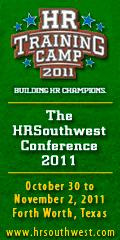Is Your Summer Dress Code Too Hot to Handle?
 Print this Article | Send to Colleague Print this Article | Send to Colleague
Oh the joy of Texas summers! With balmy 104 degree days and a sun that could melt pavement, many employers are left to decide whether to crank up the A/C or relax dress code policies and risk turning up the heat with skimpier wardrobes. Most businesses have official dress codes, but often in the heat and humidity of the summer months, employees push the envelope in search of relaxed standards. Where should the line be drawn and what are the legal risks employers may face when it comes to restricting employees from wearing certain types of clothing?
If the line is crossed between office-appropriate and too-much-skin, employers need to know whether enforcement of dress codes may be unlawful. Although there are no federal laws that directly address employer dress codes, such policies cannot be used to discriminate against employees on the basis of protected traits such as gender, race, religion or disability, to name a few. But despite such protection, some employees periodically try to take advantage of their rights.
In 2007, a Costco employee was fired for consistently wearing an eyebrow piercing on the job. The employee filed a religious discrimination lawsuit claiming that he belonged to the "Church of Body Modification." Not surprisingly, Costco won the lawsuit. Another popular claim against employer dress codes focuses on gender discrimination. Although effort must be made by employers to treat men and women equally in the workplace, they are allowed to make distinctions in dress code based on gender. In 1998, a court upheld Blockbuster’s dress code that mandated male employees to cut their long hair, but did not enforce such a restriction on female employees. Even though employers rarely come out on the losing end of lawsuits stemming from dress code violations, litigation can be both costly and damaging to a company’s reputation.
Here are a few tips for employers and HR professionals to ensure that dress code standards are upheld, while employees remain comfortable and happy:
• Require employees to maintain an appropriate, well-groomed appearance.
• If you choose to allow casual business attire, provide specific guidelines for what is and is not acceptable.
• Clearly communicate dress code expectations and policies to employees.
• Consistently enforce the dress code with all employees, making exceptions only where the law requires such or there are other compelling circumstances.
• Be careful not to target female workers as compared to males, or younger employees versus older employees.
• Disciplinary action for dress code violations should be applied uniformly to all employees.
Smart employers will communicate and implement their dress code before issues arise, lest a wayward employee claims that the change of rules unfairly targeted them. When reviewing or forming a dress code, be sure it is reasonable, nondiscriminatory and founded on legitimate business needs. This way you can beat the summer heat, without getting burned by a cold employee.
Michael Abcarian is the Managing Partner of the Dallas office of Fisher & Phillips, a national labor and employment law firm. He has experience advising and defending employers in a variety of labor and employment matters. He can be reached at mabcarian@laborlawyers.com
   
|
|



